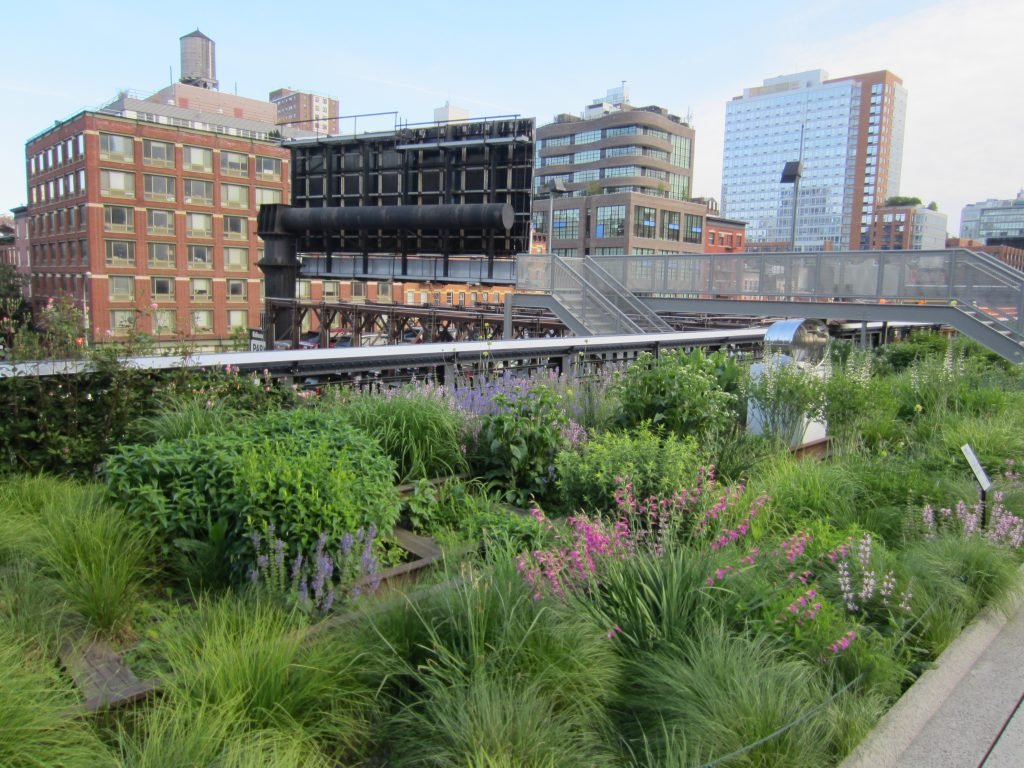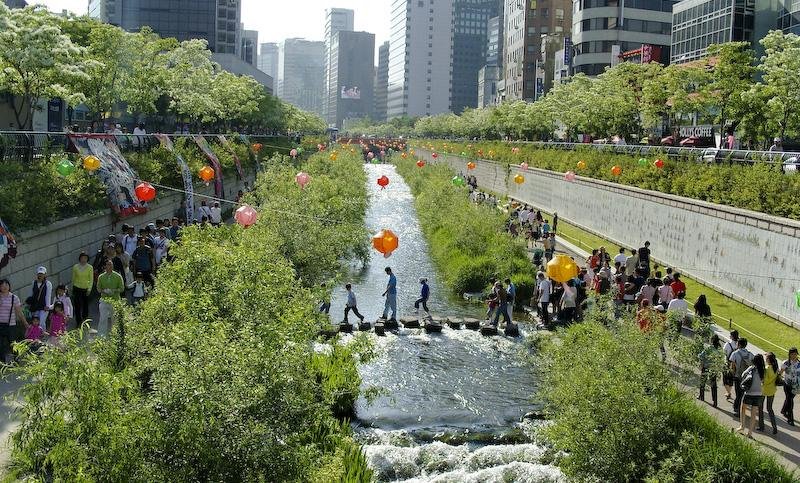Creating Nature in Our Communities
A naturalistic built environment in Sister Cities Park in Philadelphia. Image courtesy of Center City District
“Imagine a therapy that had no known side effects, was readily available, and could improve your cognitive functioning at zero cost. Such a therapy has been known to philosophers, writers, and laypeople alike: interacting with nature. Many have suspected that nature can promote improved cognitive functioning and overall well-being, and these effects have recently been documented.”
-Berman, Marc G, John Jonides, and Stephen Kaplan. 2008. “The Cognitive Benefits of Interacting With Nature” Psychological Science 19: 1207-1212
By now, most of us have heard about hospital patients with views of trees recovering faster than those with poor (or no) views from their rooms. These effects are not only very real, but they’re part of a rising tide of research that’s identifying the same pattern over and over: encounters with nature, even on a very small scale, can have significant benefits on our well-being.
But those encounters are exceedingly fleeting or nonexistent for the growing numbers of people around the world who live and work in urban environments.
We need to be more focused on the broader idea of bringing nature - including native plant communities and the beneficial wildlife they attract - into communities in as many ways as possible. Not just into our parks and green spaces, but into our schools, hospitals, mental health centers, offices, streetscapes, and commercial spaces. It’s not only important from a sustainability perspective, but also a human one, as researchers keep finding more and more mental and physical health benefits stemming from even brief encounters with nature.
Just the Tip of the Iceberg:
A meta-analysis of 143 studies found wide-ranging health benefits associated with green space exposure, including “statistically significant reductions in diastolic blood pressure, salivary cortisol and heart rate.” [see sources below]
Populations that are exposed to the greenest and most natural environments have the “lowest levels of health inequality related to income deprivation.”
Access to green spaces reduces stress and stress-related illness for urban dwellers “regardless of the informant’s age, sex and socio-economic status.”
Interactions with nature “improves cognition and affect for individuals with depression.”
“Children with ADHD who play regularly in green play settings have milder symptoms than children who play in built outdoor and indoor settings. This is true for all income groups and for both boys and girls.”
Employees with views of nature from their workspaces had higher job satisfaction and lower stress and took fewer sick days than those without nature views at the same companies.
Populations that live close to trees showed 8-12% lower mortality rates.
Nature in the Built Environment
At Wild Roots, we believe that by incorporating naturalistic plant communities into the built environment, we can all experience these benefits.
What do we mean by nature? You don't have to visit a wilderness or National Park to find it, but it’s more than just open green space. And it's definitely not beds of mulch with a few of the same old plants poking up at widely spaced intervals.
We believe that to have the greatest effect, we need to create thriving plant communities wherever we can that change with the seasons and over time. These areas should be alive with wildlife, including beneficial insects like butterflies, bumblebees, and other pollinators, as well as native songbirds. We also believe the plantings should reflect the natural landscapes of their regions, one of the many reasons we prefer to use native plants whenever possible.
These benefits can and should be available to everybody. Contact us to discuss how a dose of nature can benefit your community!
Sources
Twohig-Bennet, Caoimhe and Andy Jones. 2018. “The health benefits of the great outdoors: A systematic review and meta-analysis of greenspace exposure and health outcomes” Environmental Research 166: 628-637
Mitchell, Richard and Frank Popham. 2008. “Effect of exposure to natural environment on health inequalities: an observational population study” The Lancet 372: 1655-1660
Grahn, Patrik and Ulrika A Stigsdotter. 2003. “Landscape planning and stress” Urban Forestry and Urban Greening 2: 1-18
Berman, Marc G, Ethan Kross, Katherine M. Krpan, Mary K. Askren, Aleah Burson, Patricia J. Deldin, Stephen Kaplan, Lindsay Sherdell, Ian H. Gotlib, and John Jonides. 2012. “Interacting with Nature Improves Cognition and Affect for Individuals with Depression” Journal of Affective Disorders 140(3): 300-305
Taylor, Andrea Faber and Frances E. (Ming) Kuo. 2011. “Could Exposure to Everyday Green Spaces Help Treat ADHD? Evidence from Children's Play Settings” Applied Psychology: Health and Well‐Being 3(3): 281-303
Shin, Won Sop. 2007. “The influence of forest view through a window on job satisfaction and job stress” Scandinavian Journal of Forest Research 22: 248-253
Elzeyadi, Ihab. 2011. “Daylighting-Bias and Biophilia: Quantifying the Impact of Daylighting on Occupants Health” USGBC
Crouse, Dan L, Lauren Pinault, Adele Balram, Perry Hystad, Paul A Peters, Hong Chen, et al. 2017 “Urban greenness and mortality in Canada's largest cities: a national cohort study” The Lancet Planetary Health 1: 289-297



